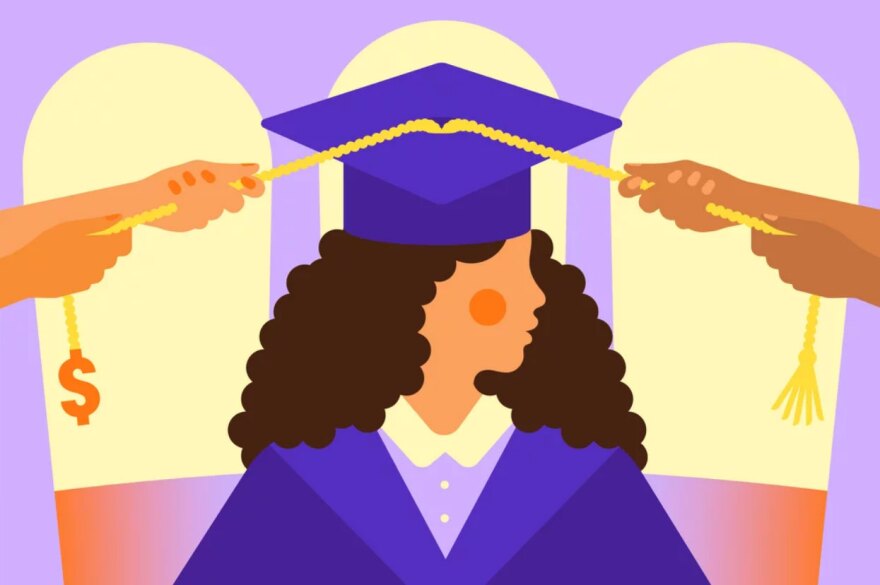Payments on federal student loans resumed this month after a three-year pause because of the pandemic.
This change could hurt state economies by taking away some spending power of those who now have to make payments again.
“As household budgets adjust to the restart, they may have to end up tightening up their budgets, which could lead to shifts in spending patterns and habits that ultimately play out in a state’s sales tax collection,” said Page Forrest, a senior associate on the Pew Charitable Trusts’ Fiscal 50 team.
Forrest helped author an analysis from Pew detailing how much each state’s finances may be affected by these payments resuming. It examines the outstanding federal student loans as a percentage of a state personal income, she said.
“State personal income is essentially all of the money earned by residents in a state that is circulating in a state’s economy,” Forrest said. “This includes income, certain investments, any profits from owning a business or property.”
In Missouri, federal student loans equaled 10.5% of the state personal income in the first quarter of this year. In Illinois that figure was 8.5%.
“That number is a way for states to contextualize the size of an economic impact they might face overtime as student loan payments restart,” Forrest said. “This is not going to be an all-at-once impact, as we know student loans are repaid on a month-to-month basis.”
Still, resuming payments at pre-pandemic levels, which were on average $236 a month, could hit revenue from general sales tax and selective sales tax as people shift how they spend, she said. Around 40% of Missouri and Illinois’ state tax revenues come from these sources.
“It’s possible as these ripple effects play out that the effects won’t be limited to just sales tax, but may also play out in personal and corporate income taxes down the road,” Forrest said.
But there are ways to mitigate this potential challenge, including income-driven repayment plans, said Spencer Orenstein, an officer on Pew’s Student Loan Initiative and an author on this analysis.
“Income-driven repayment plans really can help mitigate this impact that we’re talking about here,” he said. “They make payments far more affordable for borrowers.”
In some cases they can reduce monthly payments to $0, Orenstien said.
“That sounds wild, and at first a lot of borrowers think that can’t possibly be the case but it is,” he said.
But there’s an awareness gap, Orenstein added. Just 18% of Illinois borrowers and 20.7% of Missouri borrowers are enrolled in such programs.
The Department of Education also rolled out a new income-driven repayment plan this year, called Saving on a Valuable Education, that makes student loan payments more affordable than in the past.
Orenstein explained single borrowers on the plan making less than $32,800 a year would have a $0 monthly payment. That same $0 payment would apply to a household of four making less than $67,500 annually, he added.
“This is a huge improvement on many of the previous options that were affordable,” Orenstein said. “States can think about partnering with local institutions, nonprofits who might work with folks who could benefit from this plan, just to let them know this is out there.”
And these plans can also help relieve pressure on state budgets by helping those with student loans hold onto more of their money each month, Forrest added.




